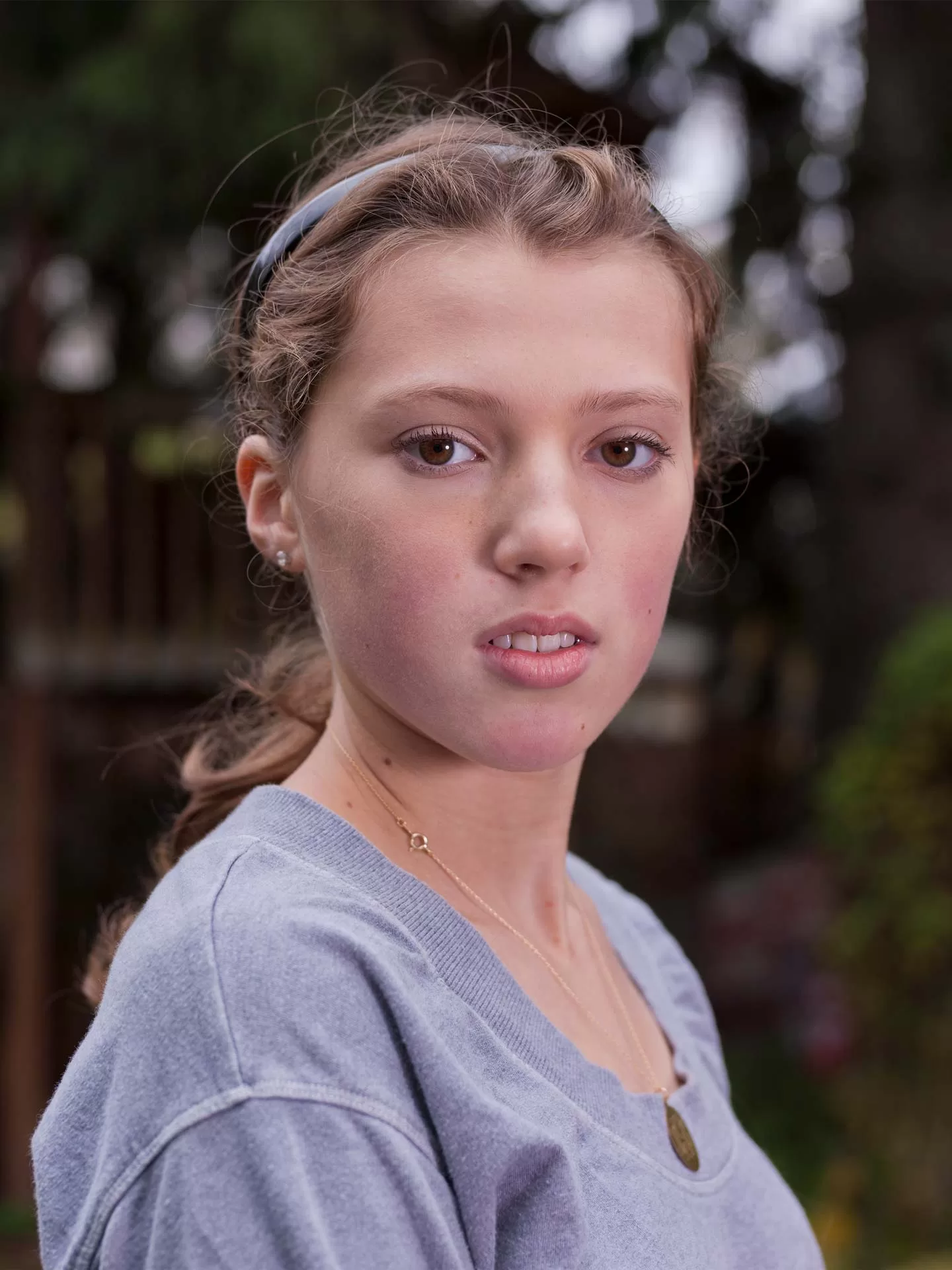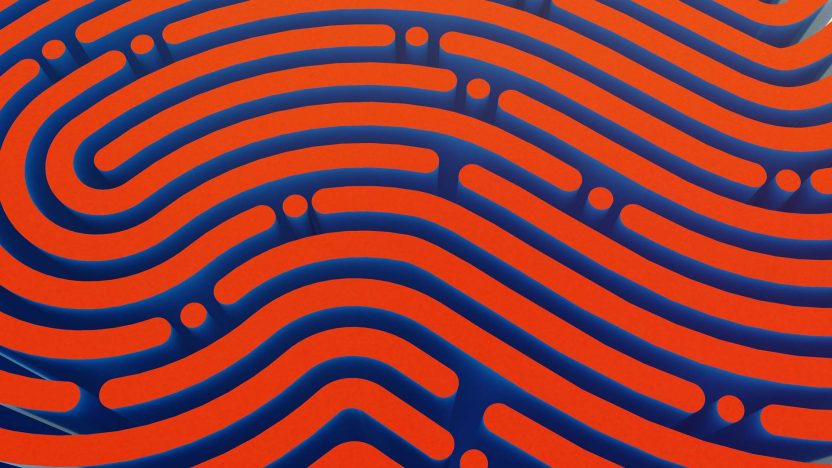No right to be forgotten
The internet has unlocked a world full of potential. But unlike material things, which deteriorate and fade, the web makes things hard to disappear. And that influences us
In conversation with Kate Eichhorn by Francesca Sironi
Photo by Evan Baden
It’s April. The curtains don’t block the afternoon sun from shining on the floor. Marghe is preparing a little dance for TikTok, while Giulia has an idea. She climbs on a chair and pulls the photo albums down from a shelf. They have three of them: one for their parents’ wedding and one for each, with pictures of their birth, baptism, and first vacations. Sitting on the floor, they open the binders like a pirate’s treasure, commenting aloud on each photo, and continuing to make comparisons: “Mommy, how beautiful you were,” “Look how cute I was,” and “What a dress!”. Marghe and Giulia are 12 and 9 years old that afternoon and have 200 thousand subscribers to their YouTube channel. They are influencers. Maria, their mother, is preparing lunch while their father, Luigi, is at work; Alberto and I are in the living room because we are shooting a documentary on the life of his two sisters.
The albums… Most of Marghe and Giulia’s memories are online. Even pictures from when they were younger often become part of photo edits from the archives. Every moment of their last five years has a digital glimpse on their cell phones and shares and likes if they have been posted on social networks. They have recalled joint memories while commenting on some videos, but there’s nothing like hearing them chat over the albums on the floor. There is a fantasy of identification, of finding oneself facing a discontinuity, a past that is long gone, unconnected to the feed, that has no equal. The off-screen of those printed images is broader and less predictable than the others. And then there is the family ritual, the questions asked to the mother to clarify who those people are, frozen in images transported without mediation from the fog of many years ago to that April afternoon.

Photos by Evan Baden. The images for The _______ High School Yearbook Project focus on a consistent group of young people. However, the high school they attend and the connections between them, like much of the world they actually live in, are a work of fiction. Using their own stories, rumors, pop culture influences, and their own desires, we create images that belong to a world that appears to be real; and as far as truth in our society is considered, it is. For often, the only proof that an event took place are the images that accompany the story; even if those images and events never took place as purported. These pictures both question the legitimacy of the image as a record as well as the problem of striving to find one’s identity in a world of fiction.
This distance, this surprise before the selves of yesterday compared to that of today, is the gift of memory. The memory that forgets, selects the instants to build the present with, and surprises us with the fragments of a past that we have been able to forget. But nowadays, the possibility of forgetting the past has narrowed, been impaired, or at least become extremely complicated by the permanence and pervasiveness of our digital footprints, explains Kate Eichhorn in The End of Forgetting, published by Harvard University Press in 2019. An associate professor of Culture and Media at the New School in New York City, Eichhorn began to wonder about the consequences of online sharing of one’s time, photos, videos, and messages that remain on the web beyond our passing, thinking particularly of teens.
“We all tend to remember positive experiences more than negative ones. If it becomes difficult to forget unpleasant moments, that has a greater impact on growth paths, where it’s easier to get exposed to situations that can make us feel shame or humiliation,” she says. In approaching the issue, Eichhorn revives a concept brought up in the ’60s by psychologist Erik Erikson, who referred to a “psychosocial moratorium” for adolescents, or the tendency of many societies to demand less severe consequences for a young person’s actions because they are given the opportunity to change. “Of course, that’s never been true for everyone — I’m thinking of Black kids, for example — but for most communities, adolescents need to be able to learn from their mistakes and leave them behind.”
The ability to transform oneself, to shift one’s image, has been disrupted by social media. “If I think about myself in the ’90s, when I left to go to college, all I had of my past was a few phone numbers of my closest friends. Going somewhere new meant I could completely rebuild and reinvent myself. Today, my students walk into the classroom with a digital legacy of contacts they’ve carried with them since elementary school. A whole auditorium of people they haven’t connected with in years except through Facebook or Instagram, but they’re still there, dangling. And that has consequences.” Because, precisely, it makes it more difficult to change, forget, and recount one’s past experience differently.
“Then there are the political consequences of this impossibility,” Eichhorn continues, “Today people, politicians and not only, are being targeted for offensive things they said when they were 20 years old, the evidence of which has lingered online.” There is little room to say: “I have changed my mind; my behavior was due to my age, and now I have a different opinion.” Nor can the chaos of a plethora of messages left online protect against digital scrutiny. “Because if someone wants to find something, they can.” So what’s the result? “We’re forming the notion that at any time you can be nailed to something you’ve done in the past. The message to young people is: what you are now, you’re going to be forever. The result is that kids become much more risk-averse. They are frightened by the odds of experimenting, or making mistakes, because the moments they experience can be retrieved from the collective memory tomorrow, in another context, if there is a record of it online.”
The statements or actions of politicians are certainly the epicenters of debated earthquakes, but there is another common, general consequence of this phenomenon. And it surfaces, quite simply, in job hunting. “In the US, some parents are willing to pay substantial amounts of money to private companies that help their children clean up their social media presence, preventing unwanted content from ending up indexed on search engines, removing embarrassing visuals, and broadly optimizing their online presence. This enables young people to be viewed more favorably by HR managers. If you don’t have the financial means to craft this perfect digital version of yourself, you’ll also have fewer job prospects. Clearly, this market is simply mirroring existing inequalities.”
Growing up inside this fishbowl and not just observing it from the outside, kids have already developed their own antibodies to the problem. “It’s amazing how much they’ve changed in a short amount of time. If I compare the attitudes toward social media of my students now versus the freshmen of 10 years ago, there’s a chasm. Today, they are enormously more cynical about the platforms, more aware of privacy issues, more strict about separating their professional identities from their personal, protected identities. They get angry at grandparents who post pictures of them as young children without asking for consent. And they certainly don’t believe the promises of tech companies as much. They know the platforms stand to gain from their exposure.” The contradictions of the online sharing market, on the other hand, are macroscopic, naivety after a while fades, and the terms of social, political, and civil acceptance of this exposure can change. “Just think of the issue of child labor. In the United States, there are stringent rules on the monetization of children’s imagery. The earnings have to be deposited in trusts in their name, and during shootings, they have to respect strict rules on rest times,” Eichhorn reflects. “Tech companies, on the other hand, by transforming children into content creators, have managed to break one of the last taboos of capitalism: the exploitation of child labor. I don’t rule out the possibility that we will soon start hearing more and more cases brought by children against parents who have been publishing their images for decades, perhaps earning a profit, without considering the possibility of their consent.”

In the collective machine of online memories, however, not everything is commercial exploitation or darkness. “Historically, no one has been interested in what young people, and young women especially, had to say. Now, however, they have a voice and a lot of it. That’s a positive thing. But it also has potentially negative consequences, especially for girls. In fact, exposure risks making them slip into a rapid and early objectification of themselves, compromising their relational opportunities. My students tell me that when their peers grow up and lose followers — because the audience changes or gets bored — they often move to OnlyFans. It’s disturbing.”
Despite all this, becoming an influencer is still one of the most desirable jobs for kids in the US (research in Europe has also shown this for years). While the line between “user” and “producer” of online content is blurring, the opportunity to make self-exposure a profession is the ambition of millions of young people. “The illusion of power makes it attractive. The chance to influence others is connected to power.” Yet online, this power is an illusion. “I happened to have a student who had a million followers on TikTok. We were talking, in class, about what they were going to do after college, and he said, ‘I’m going to keep producing content.’” Just imagine the weight that a journalist capable of bringing in a million subscribers would have in any newsroom, or that of an actor who brings in a million spectators to a theater. They would be greatly valued by their organizations, listened to, and highly paid. Instead, for TikTok, Eichhorn’s young student influencer is one of many. He has no bargaining power, or decision-making power, within the multinational company to which he brings traffic and revenue.
It’s November. Marghe and Giulia are with their parents in Rome, invited to the premiere of a film. The production company has engaged them along with two other influencers their age through the agency that has been managing their image for a year. After the screening, there is a dinner for the film producer with her son, the agency representatives, the young influencers, and their parents. The table is wide, so wide that they can’t hear each other from one side to the other, amidst the noise of the dishes and the conversations. The two sisters are sitting close together. Giulia wears a pink headband with two pom-poms; Marghe is very polite, poised, looking around. Exchanges with other influencers are minimal, almost non-existent. It’s a world monitored by adults. What kind of encounter can they possibly have in such a short time? One is a tiktoker. He’s on his cell phone, responds cordially to every question he’s asked, and then immediately shuts down. He seems to be protecting himself by lowering his gaze. The other is famous on YouTube, sits next to her father, is expansive, and talks about sponsorship. Marghe and Giulia are sitting next to each other. They’re chatting with the producer. They smile when a funny upside-down artichoke arrives. They are and will be sisters; they will go back to their daily days, far from that world of the backstage and at the same time above the stage. They are and will remain closer than the assessments around them. On their way out, arm in arm, they shoot a video with their parents. In the middle of Piazza Cavour they hug, take a selfie, and leave.





